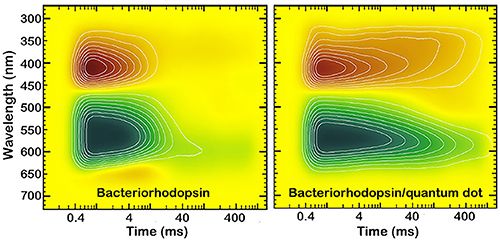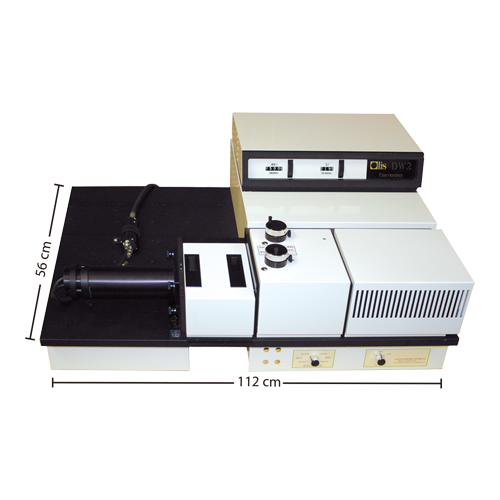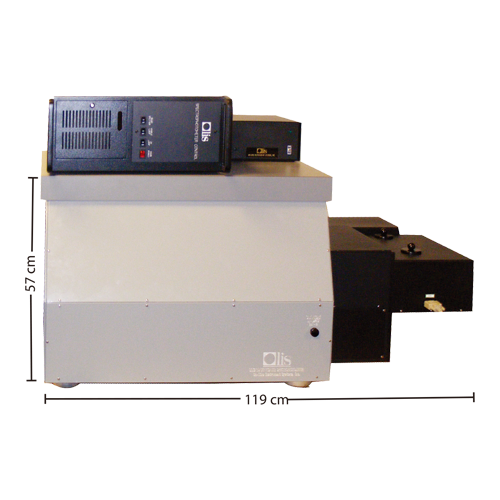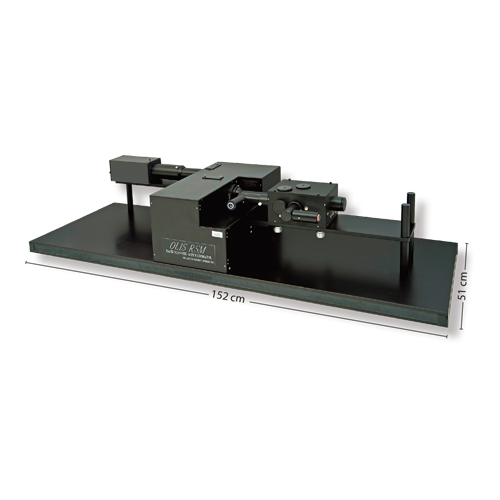OLIS RSM 1000用于杂化细菌视紫红质/量子点体系的可调谐光循环动力学研究
Tunable photocycle kinetics of a hybrid bacteriorhodopsin/quantum dot system
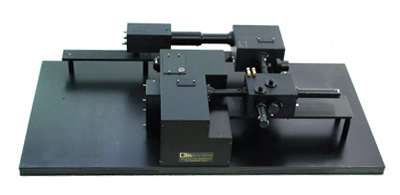
在生物环境中包含无机纳米粒子已导致产生用于各种应用的混合纳米系统。一种这样的系统包括与光活性蛋白质细菌视紫红质(BR)偶联的量子点(QD),其已经在开发增强型光伏器件中进行了探索。在这项工作中,我们发现可以使用CdSe / CdS(核/壳)QD来控制BR光循环的动力学。使用时间分辨吸收光谱法监测具有不同QD量的蛋白质样品的光循环寿命。在动力学迹线中观察到bR和M状态寿命的浓度依赖性伸长,因此表明BR和QD之间发生激子耦合。我们提出BR与QD的配对有可能用于基于蛋白质的计算应用,特别是用于实时全息处理器,其依赖于bR和M光中间体的时间动态。
The inclusion of inorganic nanoparticles in biological environments has led to the creation of hybrid nanosystems that are employed in a variety of applications. One such system includes quantum dots (QDs) coupled with the photoactive protein, bacteriorhodopsin (BR), which has been explored in developing enhanced photovoltaic devices. In this work, we have discovered that the kinetics of the BR photocycle can be manipulated using CdSe/CdS (core/shell) QDs. The photocycle lifetime of protein samples with varying QD amounts were monitored using time-resolved absorption spectroscopy. Concentration-dependent elongations of the bR and M state lifetimes were observed in the kinetic traces, thus suggesting that excitonic coupling occurs between BR and QDs. We propose that the pairing of BR with QDs has the potential to be utilized in protein-based computing applications, specifically for real-time holographic processors, which depend on the temporal dynamics of the bR and M photointermediates.
https://link.springer.com/article/10.1007/s12274-018-2224-4

